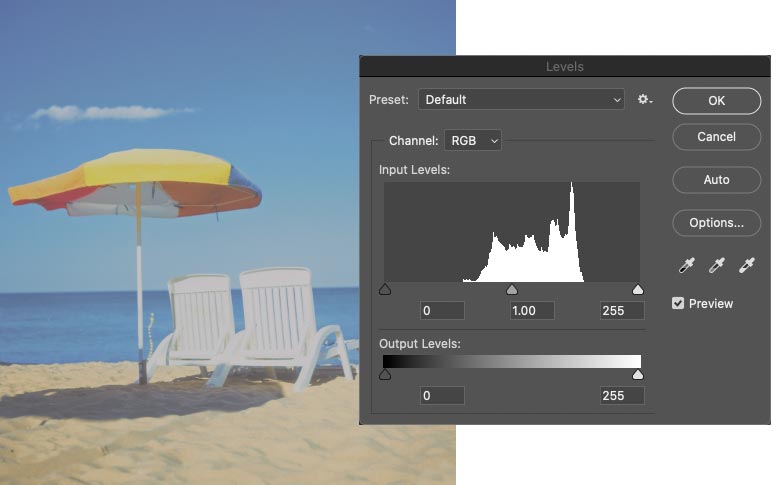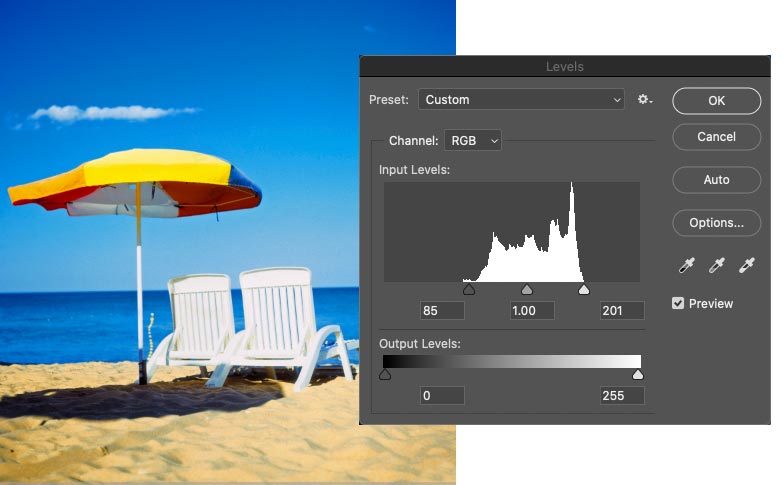

| » Forum Index » Problems and solutions » Topic: Practical Uses for the Histogram |
|
Posted on 26/07/20 12:23:42 PM |
|
Mariner
Renaissance Mariner Posts: 3215 Reply |
Practical Uses for the Histogram
Can anyone tell me if the histogram has any practical uses? |
Posted on 26/07/20 12:40:21 PM |
|
GKB
Magical Montagist Posts: 4099 Reply |
Re: Practical Uses for the Histogram
In-camera I use it on a regular basis to gauge my exposure. With modern cameras being so good at calculating exposure it is not necessarily required but I do a lot of infrared work and the exposure sensors donít always do a good job in infrared light so I use the cameras in manual mode. The exposure metering will give the same potential problems as in any automatic mode so I go to the histogram to set my exposure. If you keep the histogram roughly central in the display means that the blacks wonít be blocked out and there will still be information in darkest areas and similarly with the whites which wonít get washed out and still retain detail. BUT there are exceptions to this rule such as, for example, a snow scene where the tones are predominantly white or shooting that black cat in a coal cellar at night where everything is very dark. Use the histogram with care. Using the histogram together with RAW files gives the most accurate exposure rendition. If you shoot jpgs there is less information in the file so you need to be more accurate with your exposure. Its function in Photoshop is essentially the same as you can balance the tones to get as much detail into your image as possible. Do this in the Levels dialogue by dragging the black point slider to where the histogram starts to rise up from the bottom of the graph. Now do the same with the white slider on the right of the graph to the point where the histogram starts to rise. Doing this stretches out the tones so that the darkest point is now fully black and the lightest tones are fully white with all of the tones appearing in your image. If the histogram is all bunched up on the left your image is underexposed. If itís fully bunched up on the right, itís overexposed. If you are shooting in RAW you can recover much of the image by adjusting the exposure slider in Photoshop Camera RAW, Lightroom or, as I use, Capture One. Adjusting the exposure this way you would bring the histogram back into the centre and then use the Levels command to stretch the tones as I said above. Not something much touched upon here in HTCIP but it can be a very powerful tool when used along with ĎCurvesí should you ever want to venture into the alien territory of Lab mode. Iím sure Steve and others will be able to enlarge on this in many ways Hereís a link that I found that explains a bit more http://photographylife.com/understanding-histograms-in-photography _________________ Always remember that you are unique - just like everyone else. |
Posted on 26/07/20 8:48:29 PM |
|
Steve Caplin
Administrator Posts: 7106 Reply |
Re: Practical Uses for the Histogram
There are cases when it can help to balance an image. Let's say you've got a low contrast image such as this. The histogram in Levels shows how the tones are all bunched together: 
If you drag the black and white points to the edges of the histogram, you stretch the tones to the full range: 
That said, I always prefer to just do it by eye. But I think that's what it's mainly there for. |
Posted on 26/07/20 9:44:31 PM |
|
DavidMac
Director of Photoshop Posts: 5968 Reply  |
Re: Practical Uses for the Histogram
I hate it and never use it. That is not say that it isn't a useful tool it's just not one I like. I have evolved differently. Most still photographers understand and can use histograms in a manner that is properly useful but remains a bit superfluous to me. I have always been suspicious of technical approaches to exposure and contrast ratios. Technical assessments of exposure tend to revolve around the idea of what is "good or optimum", but that is different for every image and often we want to deliberately break that mould. If I do want a technical assessment of an exposure I prefer to use something called Y axis waveform. It is the absolute standard for movie and TV. It is available in movie grading apps such as the wonderful Da Vinci Resolve, but is not normally used by still photographers. The reason graphs can be useful in movie is consistency. As a still photographer each picture I take can usually 'float' at it's own level, be it natural or induced. But with movie you are shooting shots to be edited together and so exposure and contrast consistency become critical if they are to edit together seamlessly. It's a very particular problem that does not usually apply very forcefully to photographers. The only photography based app I know that offers Y axis graphing is Affinity Photo. This is one of the the reasons that, for photo correction, especially exposure, I will often use Affinity - whereas for compositing I always use Adobe. Sorry not a very helpful answer. I suppose what I am trying to say is don't worry about it too much. My personal feeling, based on nothing more than personal experience, is that technicians look at graphs and creatives look at pictures. Sometimes, when there are problems, graphs and curves and histograms can help pinpoint where the problem lies, but frankly it is very rare indeed that I need that level of assistance - it's there in the picture if you know how to look! My professional life started as darkroom printer for a fashion photographer. The point of departure to print well is to sort the negatives first by density and contrast. You develop an eye. It's an incredible education. Now that's easy to say from a position of experience - but not necessarily a good idea. To give a parallel I am a fanatic cook. It's my passion. I cook by feel and instinct. I have nearly three hundred cookbooks!! ....... but I never follow their recipes exactly, they are simply a point of departure to trigger ideas. I cook by feel. But I am still a far less experienced cook that I am cameraman. So, when roasting, for example, I use a digital probe thermometer which tells me what is going on inside the meat or whatever. That's my Histogram if you like ...... Many cooks would say that, if you know what you are doing, it's unnecessary. Maybe, but it gives me more confidence. So if I were a less experienced cameraman I would probably rely on tools such as histograms. Why not? If they are available why not use them and benefit from them? It's really a case of what you feel comfortable with or what gives you more confidence. How's that for muddying the waters!!!??   _________________ The subtlety and conviction of any Photoshop effect is invariably inversely proportional to the number of knobs on it ....... |
Posted on 29/07/20 12:16:14 PM |
|
Mariner
Renaissance Mariner Posts: 3215 Reply |
Re: Practical Uses for the Histogram
I thank you all three for your advice. Gordon, I see you like to get into the technical details, which are a bit beyond me as I am not much of a photographer. Steve, thank you for your practical demonstration. I can see it makes sense and I will use it if the opportunity presents itself. And David, you have persuaded me to forget about histograms and take up cooking! 
|
Posted on 29/07/20 12:20:22 PM |
|
Mariner
Renaissance Mariner Posts: 3215 Reply |
Re: Practical Uses for the Histogram
Gordon, thanks for the link to histograms which is very detailed. And helpful. |